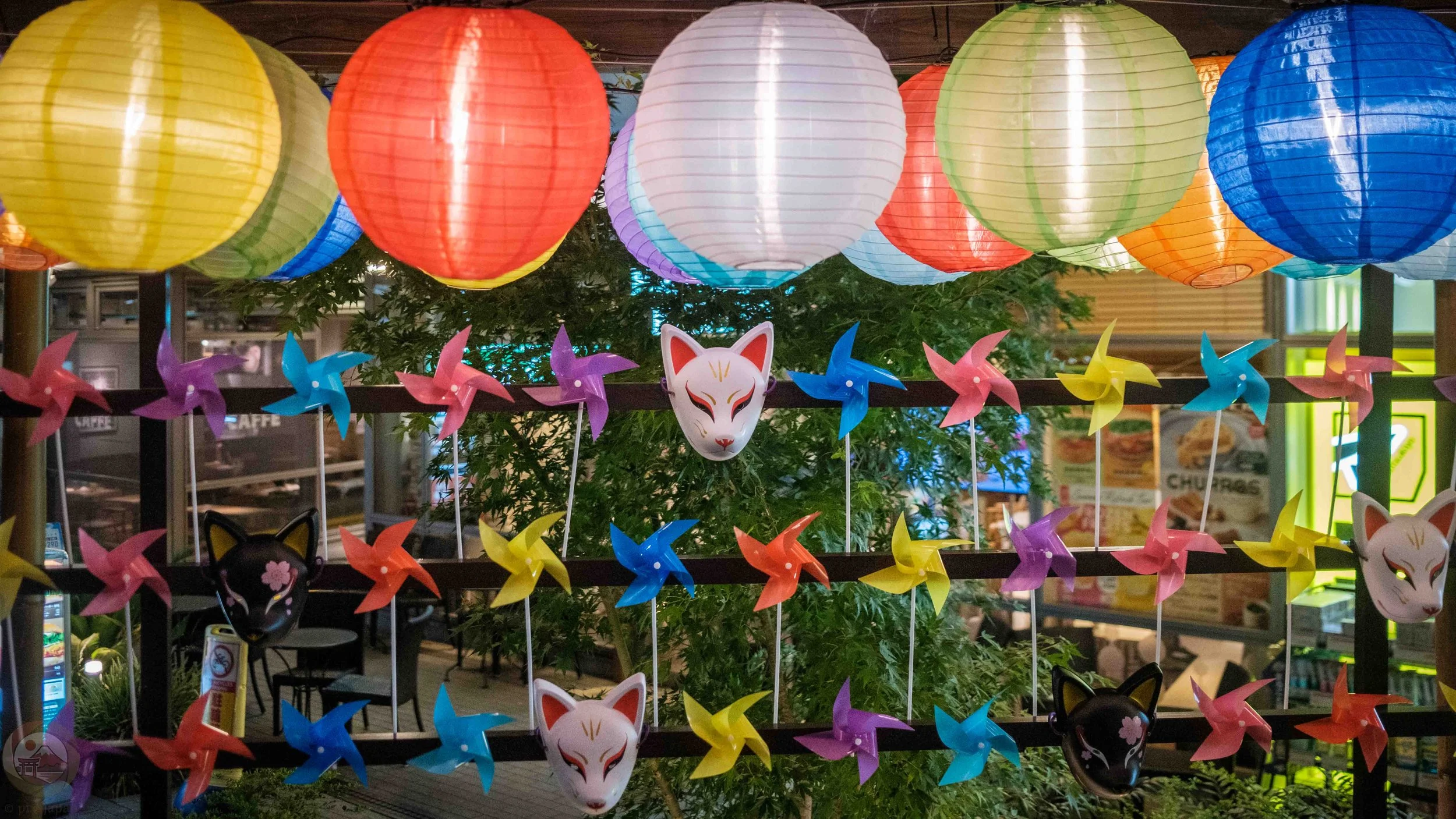Summer Motif
If this scene speaks to you, prints and downloads are available:
If this scene speaks to you, prints and downloads are available:
Japanese Summer Festival Decorations at Southwood, Yokohama
提灯と風車と狐面、夏のささやき
The Southwood shopping mall, located near the south exit of Center-Minami Station on the Yokohama Municipal Subway Blue Line, is a modern commercial complex that beautifully blends sustainability with Japanese architectural tradition.
Southwood is Japan’s first large-scale wooden commercial facility, featuring extensive use of domestic lumber in its construction. The developer notes that compared to reinforced concrete buildings, the structure reduces CO₂ emissions by approximately 1,400 tons over 50 years of use, making it an environmentally friendly building designed to minimize its impact on the environment.
In front of the building lies a wooden deck furnished with benches made from the same laminated wood used in the mall’s architecture. The deck area is regularly decorated with traditional Japanese motifs that change with the seasons and local festivals.
In my photos, you can see paper lanterns, known as chōchin (提灯), which literally means “bucket light.” Traditionally, these lanterns were made by stretching paper over a split bamboo frame, allowing them to fold flat when not in use. Before electricity, they were carried at night to light the way. Today, chōchin are commonly seen outside Japanese-style pubs, at Shinto shrines during festivals, and as summer decorations at schools, shopping streets, and malls across Japan.
Also hanging from the display are colorful pinwheels, known as kazaguruma (風車), which were once handmade from origami paper. They evoke nostalgic memories of childhood where I remember running to make them spin in the breeze, which is an innocent joy still shared by children worldwide. When the summer wind sets them turning, we can both see and feel a brief sense of coolness and relief from the hot and humid air.
We can also see black and white masks of a fox, or kitsune-men (狐面). The kitsune fox holds an important place in Japanese mythology. It is said that kitsune served as a messenger and companion of Inari, the Shinto deity of agriculture, who blesses rice fields and ensures bountiful harvests.
Before the rice harvest, summer festivals were traditionally held to welcome the mountain kami (deity), who would descend from the mountains to the paddies riding a horse guided by a fox. The origin of the kitsune stretches back thousands of years, with roots in Hindu, Chinese, and Japanese mythology. The earliest written reference to kitsune in Japan dates to the 11th century.
Today, the kitsune mask is a familiar sight not only at traditional summer festivals but also in urban celebrations and modern Japanese pop culture from pop art and manga to anime where it continues to captivate people, including many children overseas who recognize it instantly from some anime and manga.
I’m glad I had my camera with me on my way home from work on this particular evening. The soft glow of the summer lights at the Southwood summer display helped me momentarily forget the fatigue of a long day at the office, reminding me how small, beautiful moments can brighten even an ordinary commute.
Location: Tsuzuki Ward, Yokohama, Japan
Timestamp: 2025-08-26・21:11 & 21:12
Fujifilm X100V with 5% diffusion filter
23 mm ISO 3200 for 1/500 sec. at ƒ/2
Classic Chrome film simulation
References:

